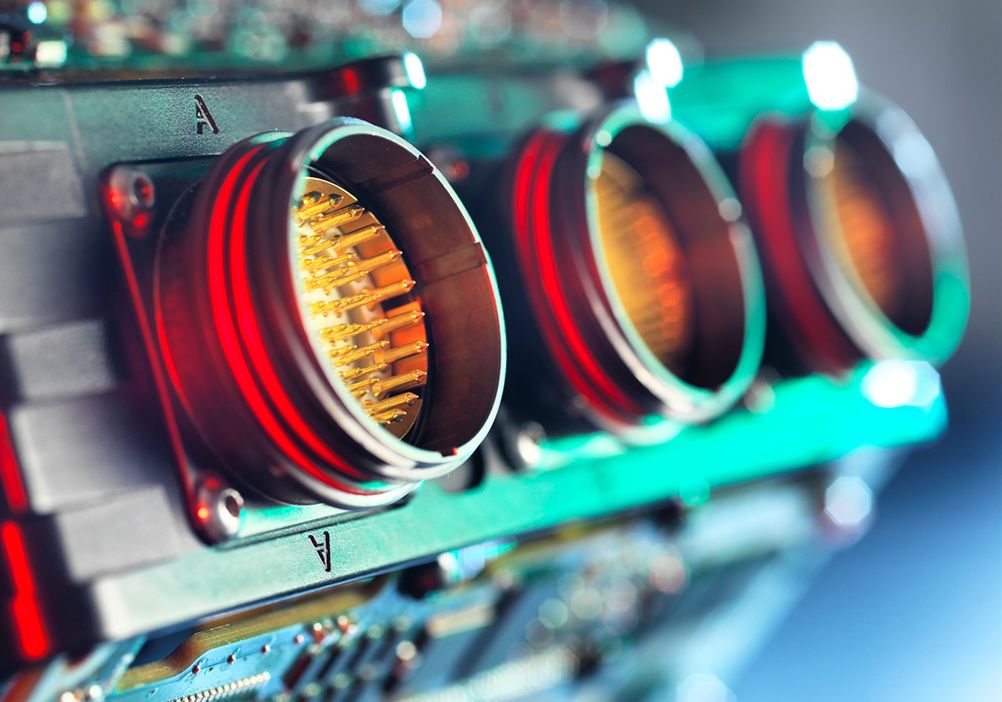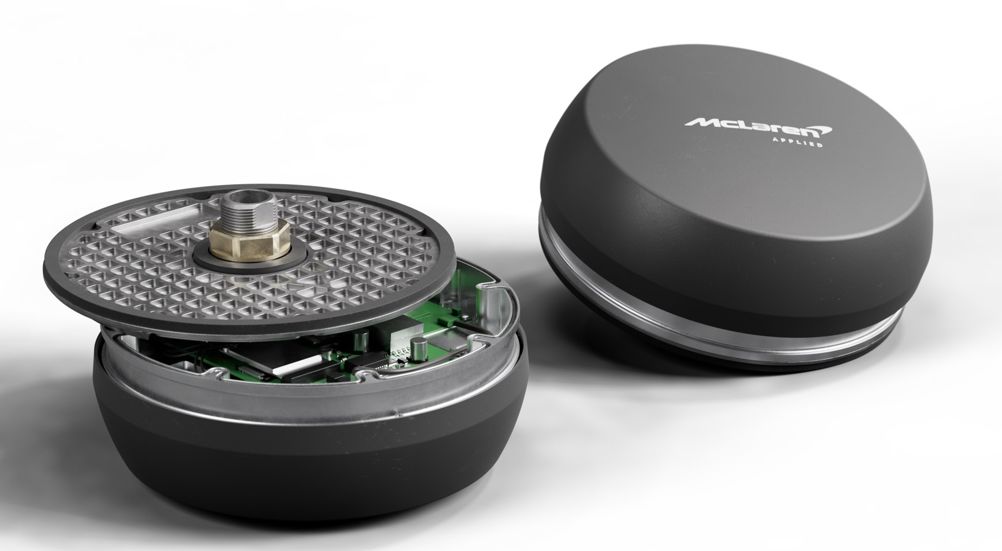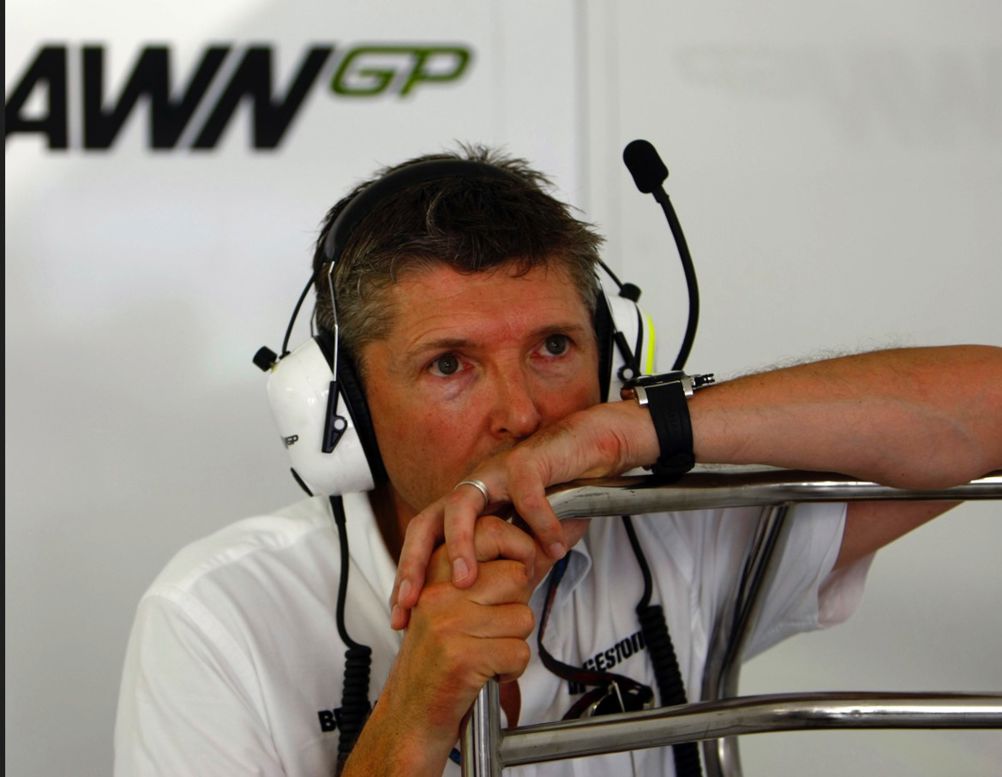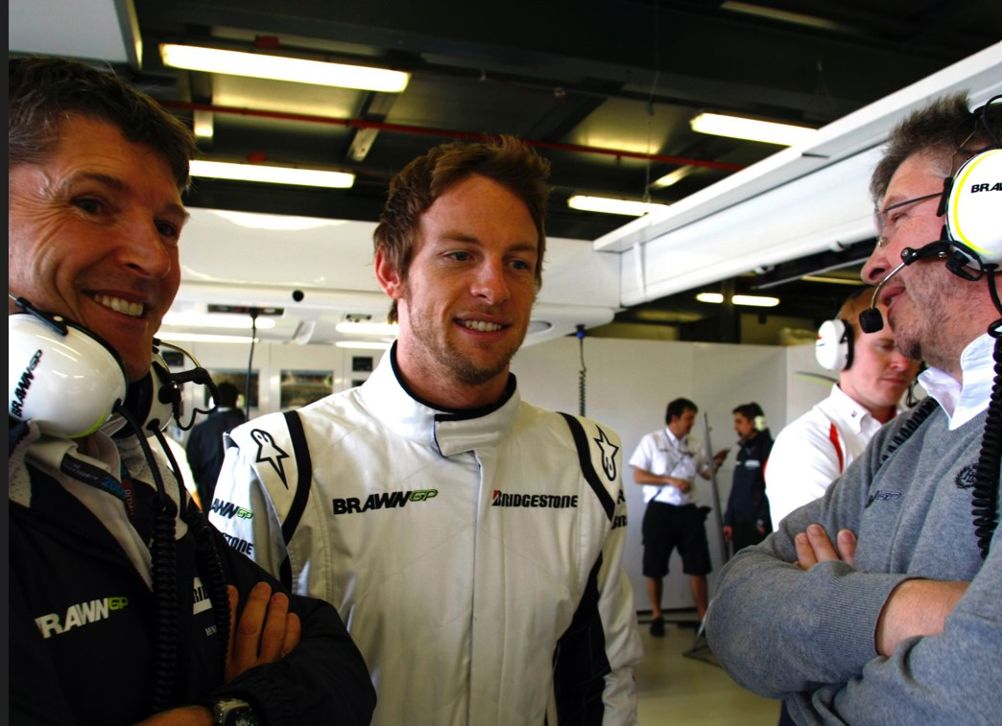
Nick Fry speaks with the calm assurance of a man fully confident in his own abilities. It’s the type of confidence that comes from several decades at the forefront of the automotive and motorsport industries, experiencing the highs of racing glory as well as the lows of financial crises and sporting near-misses.
His current role as non-executive chairman of McLaren Applied has seen Fry help steer the company back towards its automotive roots, refocusing on its core engineering heritage in the wake of Covid. But despite having leading roles with some of the biggest names in motoring throughout his career, his own academic roots lie elsewhere. “My degree in fact is in economics,” said Fry. “After university I had the choice of Procter and Gamble, Unilever or Ford, and decided that frozen peas and detergents weren’t quite the thing for me. So I went off to Ford and I started in sales and marketing.”
At Ford, he found his way into market research and ‘advanced products’, working on new vehicle concepts. The role meant he developed relationships with teams working in product development and planning, learning fast and expanding his technical knowledge. “The product planning activity was either loved or vilified in that it was the interface between marketing and the engineering function,” said Fry. “What we did was take a product concept and turn it into a high-level engineering definition...so I, from a fairly early start, was overseeing the definition of new model programmes, working with engineers. I would quite happily say that if you gave me a drawing board or a CAD screen, I couldn’t design it for you, but I’ve worked cheek by jowl, as it were, with engineers from probably 24 or 25 years old.”
According to Fry, not having an academic engineering background has often worked to his advantage, providing him with a slightly different outlook. As he says himself, he’s always been technically minded, picking things up quickly and - perhaps most importantly - knowing how to stay out of people’s way so they can get on with engineering. “I think it’s a relationship where you respect what they can do and hopefully you can add a little value from a different perspective,” he said.
when you’ve got to make a Ford Fiesta every 50 seconds, it’s a real challenge. The people who are doing that, you know, day in day out…deserve the highest level of respect because it’s a tough gig trying to make a car
At Ford, his knowledge base was broadened by spending time in a variety of different departments, bridging the gap between engineering and executive functions. “I sort of joke that with Ford, they didn’t really know what the hell I was any good at. So I had the opportunity to do lots of different things.”
This included planning and project management of major car programmes like the Mondeo, Fiesta and Focus. Following those successes, Fry then decided he wanted to experience the white-hot heat of manufacturing. That decision raised a few eyebrows: plant management was – and still is - widely considered one of hardest jobs in automotive, with most people keen to steer their careers away from it. Actively going against the grain was a risky move. “They sent me down to the Ford plant at Dagenham to shadow the plant manager,” he said. “And being young and arrogant, I followed him around for two weeks and thought, well, ‘I could do that’, which was actually completely misplaced. I quickly realised that it was as tough as hell. But I managed two/two and a half years down at Dagenham and learned one hell of a lot. And when you’ve got to make a Ford Fiesta every 50 seconds, it’s a real challenge. The people who are doing that, you know, day in day out…deserve the highest level of respect because it’s a tough gig trying to make a car.”
While Fry was helping to roll Fiestas off the line at Dagenham, Henry Ford II was buying Aston Martin on something of a whim, or so the story goes. When ‘Hank the Deuce’ died shortly after in 1987, Ford was left with a struggling marque that was losing money. With someone needed to turn things around at Aston, Fry’s multitude of experience across the automotive ecosystem landed him the job. “I think possibly I was the only one, you know, in 350,000 people (at Ford) who had some manufacturing experience, some marketing experience, etcetera, etcetera,” he said. “And I think having that diversity of outlook, actually, is a bit of an advantage.”
As managing director of Aston Martin, Fry oversaw the development and launch of the celebrated DB7 model, as well as the company’s transition from a manufacturer of solely hand-built vehicles at the traditional Newport Pagnell site, to higher volumes in a new factory at Bloxham. It was during this time that he met motorsport mogul David Richards, who would subsequently bring Fry in to run his engineering company Prodrive. “The core of that company was the Subaru World Rally team, which I sort of oversaw for about three years,” said Fry. “So during that time we won the World Rally Championship with, firstly Richard Burns - the late Richard Burns - and subsequently Petter Solberg.”

Success with Subaru in the WRC opened the door for Fry and Richards to bring their skills to Formula One, where they headed up the British American Racing team between 2001 and 2004. Following a clampdown on tobacco advertising, parent company British American Tobacco sold the team to Honda, who invested in the core engineering infrastructure that would lay the foundations for enormous future success. “You can’t do great engineering with smoke and mirrors,” said Fry. “Great engineering requires fundamental infrastructure. And with the Formula One team under a tobacco company, it was a marketing exercise, but they were very unwilling to invest in the stuff you need to win Formula One races. Honda is completely the opposite. Honda is a really through-and-through engineering company. We invested in massive CFD capability. We invested in huge test and development resource, which subsequently became Brawn and then subsequently became Mercedes...Mercedes as another great engineering company has just built on that. The reason Mercedes are successful...and I know the same is true of Red Bull, is because behind the scenes there is just the huge, hundreds of millions spent on engineering tools which enable them to be as good as they are.”
Mercedes would capitalise on that engineering investment with nearly a decade of F1 dominance, winning eight consecutive Constructor’s Championships from 2014-2021. Before that, however, Fry and Ross Brawn would have their own Hollywood story. Having purchased the team from Honda for £1 as the financial crisis started to bite, the pair helped spearhead an unlikely Constructors’ and Drivers’ double in the maiden season of the renamed Brawn GP team, with Jenson Button claiming the 2009 world title. But their time as owners was to be short lived. “We quickly realised that owning a Formula One team as two private individuals is probably not the best position, and we sold it to Mercedes-Benz,” said Fry. “And subsequently they’ve, until recently, clearly been the top dogs.”
After parting company with Mercedes, Fry spent a period exploring different roles, including as chairman of an e-sports team, and dipping his toe into hotels and restaurants. But his wealth of industry IP meant he was never likely to stay out of automotive for long. When McLaren Applied was spun out of the wider McLaren Group in August 2021 and sold to Greybull Capital, Fry became the first board-level hire shortly after. Like many others at the time, the company was feeling the impacts of Covid, alongside separate, pre-existing problems. “Applied had got involved in all sorts of different projects, which arguably were not its core strength,” said Fry. “By the time the Covid crisis came along, it was doing skateboards, bicycles for Specialized and the Olympics, and medical equipment.”
These projects may have been interesting, but they weren’t generating much revenue. When Covid hit, the McLaren Group prioritised its motorsport and road car divisions, leaving Greybull to snap up Applied. The investment firm had a history of taking a chance on distressed companies, with British Steel being a high-profile example where things hadn’t worked out. Fry believes McLaren Applied is in a much better position to benefit from Greybull’s approach, which he says differs from others. “It takes on companies which have challenges,” he said. “But it’s privately funded so that they are not time-bound, which I think is a very important point…we’re not under any particular time pressure here as long as, you know, we continue to improve.”

A peak headcount of around 700 at one point had been cut to just 200 by the time Fry was brought into the fold in October 2021. That number is now on the rise once again. “In the last year, or just over a year, we’ve grown from a little over 200 people to a little over 300 people,” said Fry. “And it’s all going pretty well, I have to say. We are, financially, on an even keel.”
Putting the balance sheet in order meant scaling back the panoply of different engineering projects that McLaren Applied consulted on. Out went the skateboards and bicycles, in came a renewed focus on motorsport and automotive, with an eye for the future and the technologies that would shape it. Applied’s three core business units are now defined as motorsport, automotive and connected intelligence, taking its core knowledge and expertise from the track and applying it to the mobility and data challenges of the 21st century.
Motorsport is still the biggest segment, with the company providing engine control units (ECUs) for Formula One and several other leading race series. In F1, the standardised ECUs monitor and control essential functions such as engine management, power delivery and telemetry, as well as things like transmission, suspension, energy recovery system (ERS) and drag reduction system (DRS). The devices have clocked more than 1 million kilometres on track without a known failure since McLaren Applied started supplying ECUs to the whole grid in 2008. That F1 deal was recently extended out to 2030. “Having the engine control module then leads you both upstream and downstream of that,” said Fry. “When you’ve got the engine control module, it naturally leads to sensors…on the other side of the equation, we’re into data analytics and all those squiggly graphs you see on screens on the pit wall…so we’ve got a good foothold in what I would call premium motorsports…for us, it’s Formula One, it’s NASCAR, IndyCar, Formula E, Extreme E.”
The core product for the automotive business unit is high-end inverters. Originating with the iconic McLaren F1 three-seater road car, they were adopted into Formula One, then back to road vehicles, then later into Formula E. The flagship inverter is now on its fifth iteration, the IPG5. “That is now being sold into the more specialised areas of the car industry,” said Fry. “We’ve got a number of customers at the supercar end of the business. Interestingly, although we did not target other types of transportation, it is being used in electric speedboats and it’s also being used in drones and various aerospace applications.”
The third strand of Applied’s new streamlined structure in known as ‘connected intelligence’. Drawing on the company’s motorsport pedigree - the innumerable race weekends where communications and data have played an increasingly important role – it taps into the growing trend of digitalisation now touching virtually every sector. “In Formula One you develop a level of expertise in telemetry and data transfer, which is significantly beyond most other activities in the world,” Fry continued. “So we’ve employed that firstly in the train industry.”

McLaren Applied’s ‘Halo 300’ 5G intelligent edge is a compact multi-antenna system designed for anything that moves, from trains and buses to eVTOLs. An average-length train, for example, might have four or five units, with data packets exchanged between each device as well as with the cloud. The system is already deployed on high-speed rail networks for both remote monitoring and passenger Wi-Fi applications. “The beauty of the system is quite obviously that it’s Wi-Fi, but it’s also data-out,” said Fry. “Network Rail have been blown away. We’re equipping all their engineering trains, and the level of data they can now get off the tracks and off the trains to analyse is huge. We’ve just started moving that into the bus industry. We also have a bunch of guys who work on something very similar in the mining industry.”
Helping strengthen the business around these three key units has been a major part of Fry’s remit since he joined the company. That reorganisation - in parallel with Applied now being its own fully separate entity, away from the wider McLaren Group – has put the company on the right path, according to Fry. He remains, as ever, confident about the future and in McLaren Applied’s continued success in its latest iteration. “I think it’s helped a lot,” he said. “Now that the management team here are only focused on running this business, we don’t have to worry about the others. We’ve got a fantastic relationship and McLaren remain one of our biggest customers.”
The apron strings have been cut, but the DNA remains.











McMurtry Spéirling defies gravity using fan downforce
Ground effect fans were banned from competitive motorsport from the end of the 1978 season following the introduction of Gordon Murray's Brabham...